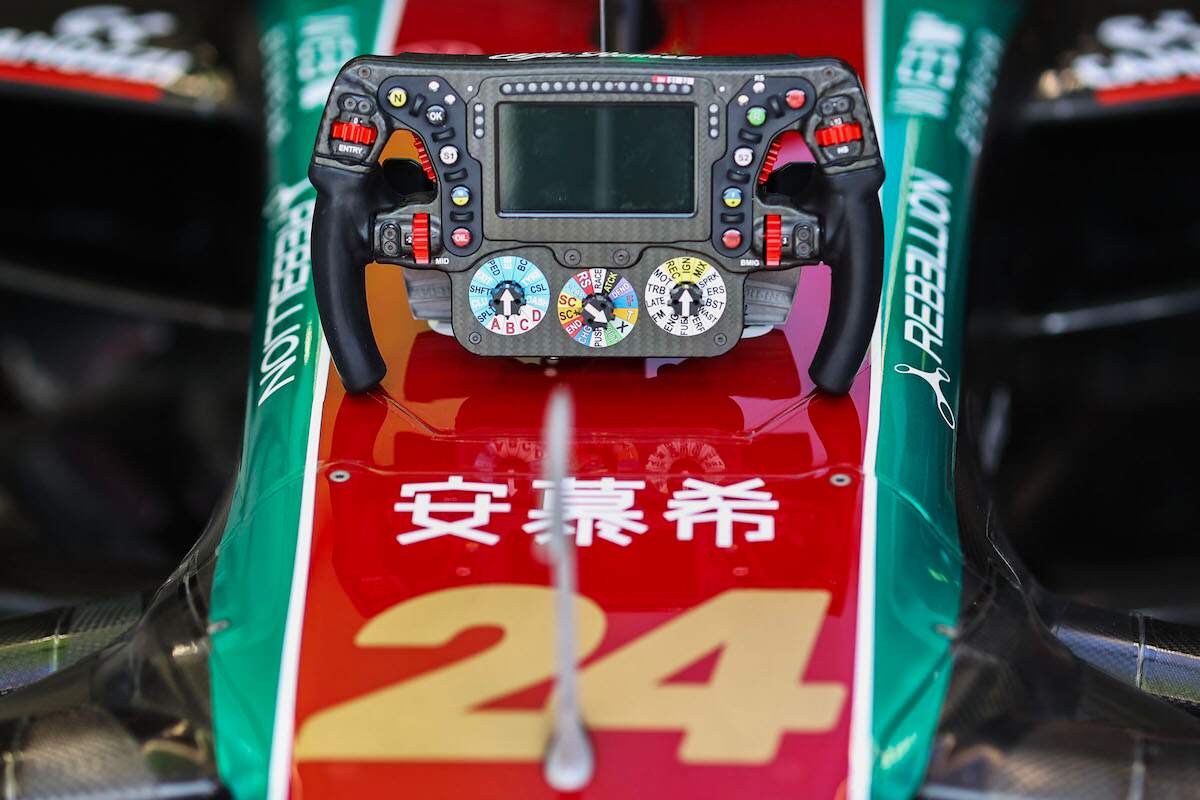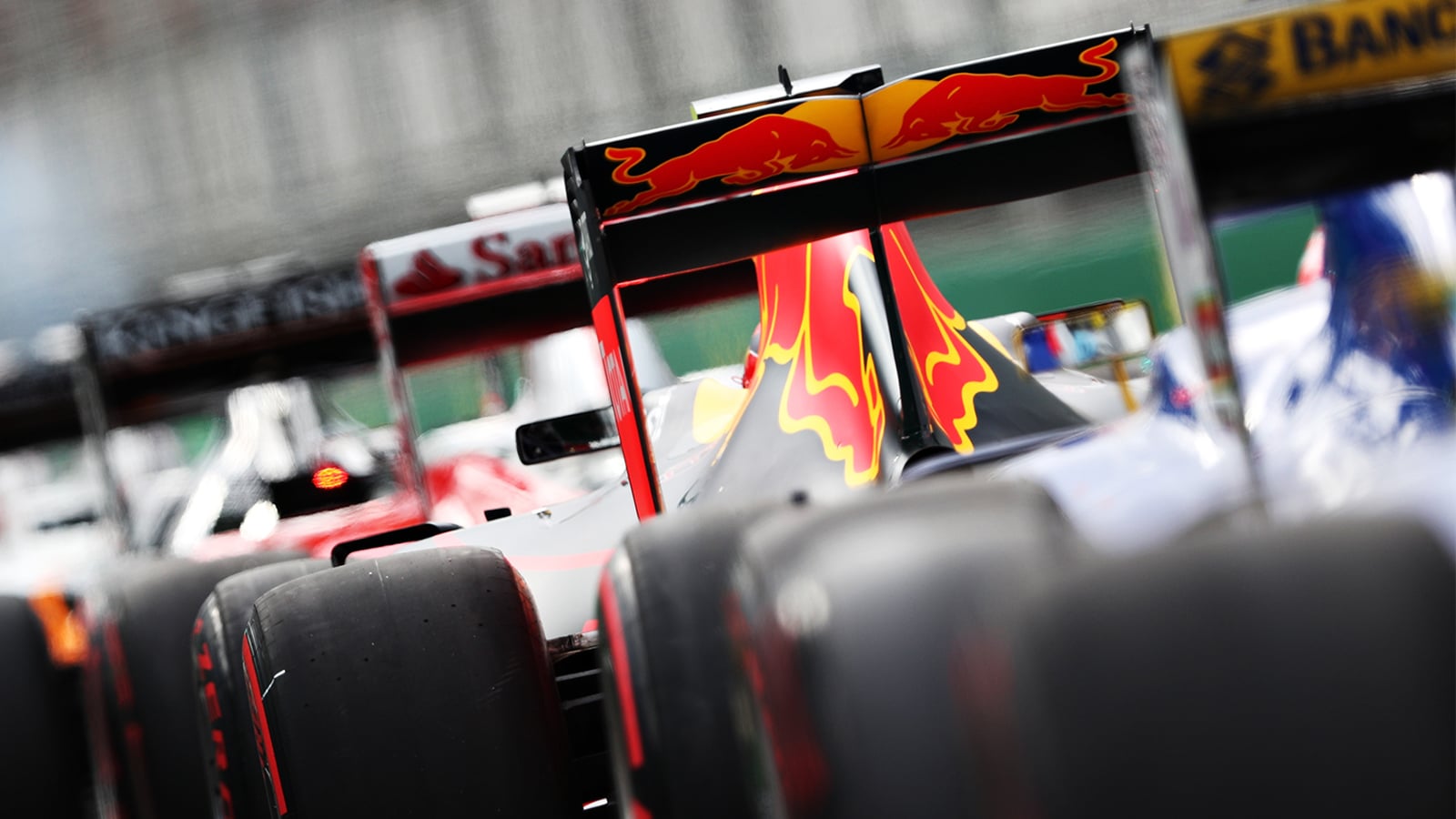
How Does a Formula 1 Steering Wheel Work and Why Do They Cost Up to $100,000?
It’s a minor miracle that drivers finish any Formula 1 race without crashing their car. Not only are they gunning it on courses at a breakneck speed, but the vehicles must also handle flexibly enough to get around tight turns and avoid the competition.
Given the dangers involved, it makes sense that constructor teams spare no expense regarding the equipment installed in their cars. In fact, a Formula 1 steering wheel costs more than most regular vehicles.
How a Formula 1 steering wheel works
Mercedes AMG goes in-depth to explain how a Formula 1 steering wheel works. In total, it consists of 25 buttons, switches, the clutch, and the shift paddles. Five buttons change the brake settings of the car. Three switches control the differential (the amount of torque transfer between the rear wheels) for the entry, apex, and exit of a corner.
The others have many different use cases, such as:
- Presenting in-race data on a display screen
- Clutch control
- Dispensing water to drivers
- Radio communication with pit engineers
- Pit lane speed limit options
- Providing an extra boost with the Overtake button
- Resetting the rechargeable battery or car computer
- Honking
The most important button varies depending on the situation in the race, but the consensus pick would likely be the “Strat” switch. It controls the Power Unit modes that determine the performance of the internal combustion engine and the deployment of the electrical energy from the Motor Generator Units.
The most used function of the steering wheel is actually to steer and for gear changes. For example, a driver in the Australian Grand Prix will use the shift paddles while maneuvering for position, using 15 shift indicator LED screens to find the perfect shift point.
The main materials for a steering wheel are carbon fiber, fiberglass, silicon, titanium, and copper. In-house mechanical and electrical designers work with technicians to produce the parts, but drivers also get a say in the design process. The ergonomics and the physical layout of the wheel are customized to suit each individual’s needs. The steering wheel design can be updated during the season if the driver asks for new revisions.
Formula 1 steering wheel cost
As Speedway Media reports, one Formula 1 steering wheel costs between $40,000–$100,000 and takes about 80 hours to build. Drivers tend to use three or four wheels throughout the season.
The vast majority of people will never have a need for a six-figure steering wheel, but F1 drivers have their reasons for high-end equipment. The steering wheels are constantly receiving minor and major updates to accommodate new technology, further account for accidents, or adhere to new recommendations from experts. The steering wheel also needs to be tweaked if other elements of the in-car system are modified.
The ultimate goal of these changes is to give each driver comfort and support while participating in such intense events. Anything each team can do to contribute to that goal (and help win races) is a price well worth paying.
Formula 1 car cost
The total cost of an F1 car is between $10–$15 million. For the 2023 season, teams have a maximum spending limit of $135 million on materials and other tools related to car performance. The cap was introduced in 2021 and lowered each year in an attempt to help smaller teams compete with traditional racing powers.
Here is the general price of each component:
- Engine: $10.5 million
- Chassis: $700,000
- Gearbox: $350,000
- Front and rear wings: $250,000
- Halo: $17,000
One set of Formula 1 tires is about $2,700. However, since a team needs 13 sets for a standard Grand Prix weekend, the combined value for each race is closer to $35,000. Hydraulics, brakes, and the fuel tank also contribute to the gaudy price tags of F1 cars.
There is no official record for the most expensive vehicles being used actively this season. But we do know the current record for vintage models. Juan Manuel Fangio’s 1954 world championship-winning Mercedes is the most expensive F1 car sold at auction. The W196R was purchased for $30 million in 2013.


